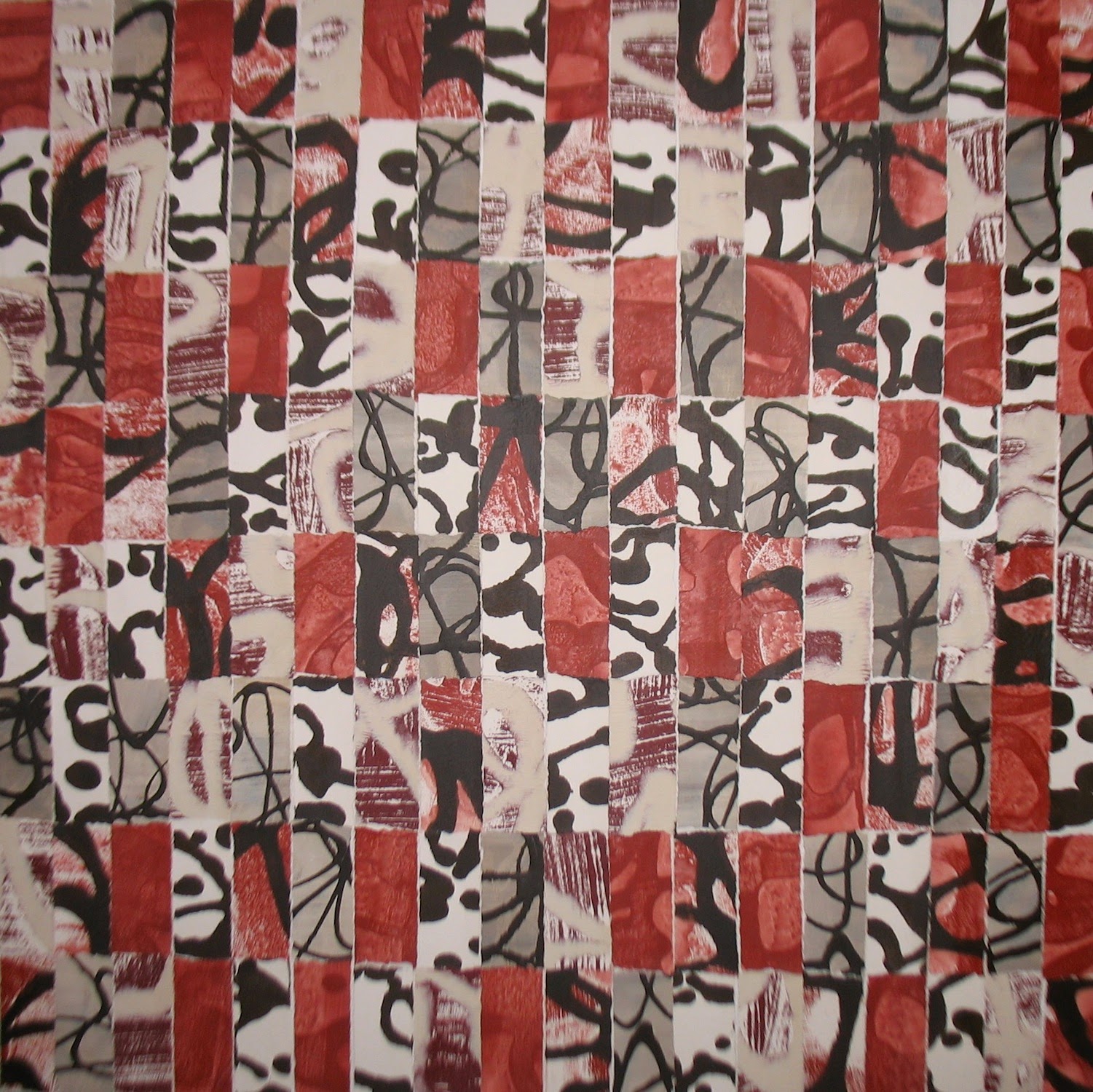Recently I have felt a renewed interest in a series I started in 2008 and had let go of for a while, my "Mosaic" series. It involves piecing together an image from torn sections of paintings made earlier on paper. Often the paper that serves as the raw material is a work that didn't seem "finished" on its own, but still offered too much potential to quite give up on. It finds an exciting new identity when mixed with other discarded works. There is a reference to the concept of resurrection in working this way, in taking some experience from the past (that is, the creation of the original paintings) and giving new life by altering their shape and size (through tearing) and placing them in new circumstances.
 |
| "Rust Mosaic" by Catherine Carter, acrylic on paper on canvas, 30 inches square, 2014 |
I was most intrigued by her "Little Image Paintings" series, made up of small sections of repeating shapes that build into a solid repeating pattern greater than the sum of its parts.
 |
| "Composition" by Lee Krasner, oil on composition board, 48" H x 37" W, 1949 |
 |
| "Black, White and Pink Collage" by Lee Krasner, ink and collage on paper, 23" H x 29" W, 1958-74 |
By the way, I must recommend this video (below) of an interview with Krasner from 1978 from a series Barbaralee Diamondstein made called "Inside New York's Art World." When I consider the evil monster she was presented as in the poorly researched biography of her husband, "Jackson Pollock: An American Saga" by Steven W. Naifeh and Gregory White Smith, and the cartoon character she was presented as in Ed Harris' movie "Pollock," it is so heartening to see her in this interview with Diamondstein. She comes across as warm, passionate, and generous, which she had to have been to make those inspiring paintings.
1 comment:
Big fan of Krasner and Diamonsteen. Thanks for posting this.
Post a Comment